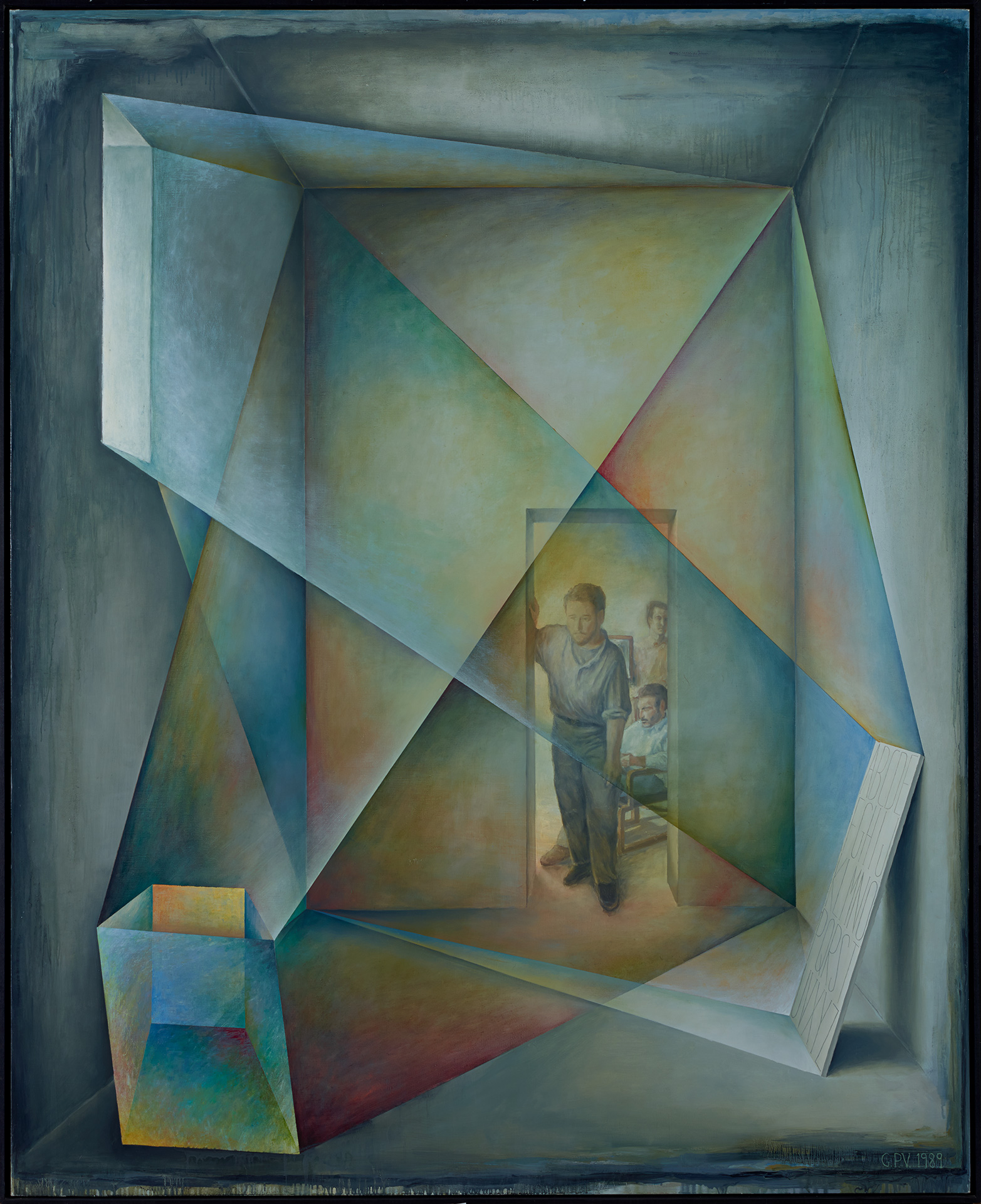
Guillermo Pérez Villalta (Tarifa, Cádiz, 1948)
The Realm of Thought
1989
WORK INFORMATION
Oil on canvas, 247 x 200 cm
OTHER INFORMATION
Signed and dated in the lower right-hand corner: "GPV, 1989" Inscription on the reverse: "Comenzado el 16 de Enero de 1989 en Roma"
Guillermo Pérez Villalta was one of the "hardcore" members of Madrid's New Figuration movement, along with Carlos Alcolea, Carlos Franco and Rafael Pérez Mínguez, who appeared on the Spanish art scene in the early 1970s in the orbit of Sala Amadís, the gallery run by Juan Antonio Aguirre. The group, which would later coalesce in the exhibition programme of Galería Buades, shared an enthusiasm for returning to figurative, narrative, autobiographical painting. Their works told ordinary, undramatic and often trivial stories, intermingled with erudite allusions to both ancient and modern art history. In those days, one of their common traits was the presence of Pop-esque echoes, evident in their use of pure, flat, glossy colours, the predominance of linear drawing in the configuration of images, and the whimsical use of naturalist references, perspectives and scales.
Although Pérez Villalta is a genuine artifex, as he likes to be called, turning his attention not only to traditional visual art (painting, sculpture, drawing, prints, etc.) but also to architecture, furniture, object and jewellery design, illustration, poster art, the applied arts (metalwork, decorative tiles, stained glass, etc.), textiles, stage sets and props, he is best known for his work as a painter.
El ámbito del pensamiento [The Realm of Thought] illustrates how, in the course of the 1970s and 80s, his interests led him down stylistic paths where his work drank deeply of Mannerist and Baroque art, ornamental and geometric expressions, the architecture of Louis Kahn and the "postmoderns", metaphysical art, Pop Art and its neo-modern offshoots, minimalism and other fonts. For, if there is one thing that has characterised Pérez Villalta's poetics since the beginning of his career, it is a determined and almost obstinate eclecticism, bent on mixing every possible style and tone to create layers of meaning. The result is usually a dense and sometimes hermetic work, whose significance is revealed differently according to the culture of each spectator.
The piece featured here is a splendid example of the author's confident belief that painting is a device for conceptual operations which does not renounce the pleasure afforded by the image. Pérez Villalta's admiration, assimilation and lucid interpretation of Duchamp's legacy has been a golden key for several generations of artists, providing a means of escape from the stifling dogmatism of conceptualist modernity. The picture, painted during his stay at the Academy of Rome, features the artist himself with some of his companions at the time, peering into the realm of thought where his own life plays out: a complex "empty" space flooded by white light from the outside (the phenomenal sphere, the senses) that illuminates a flat panel containing the alphabet. Thus, language and mathematics organise the inner structure of the artist's private mental universe, filled with sharp, contrasting facets, whose geometric pattern is formed by truncated pyramids while a shrunken, miniaturised version of the same cubicle resting on the floor represents the memory. [Óscar Alonso Molina]

